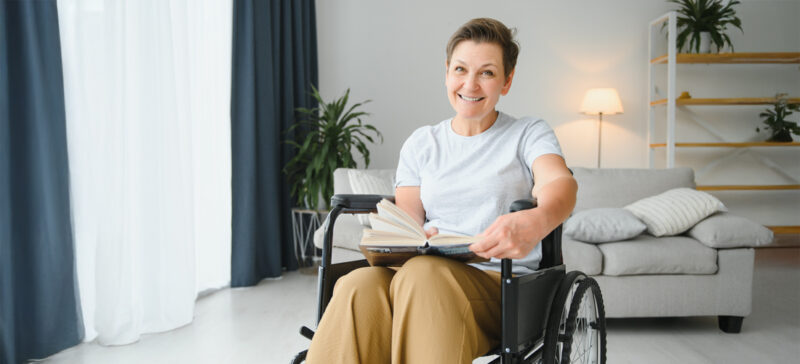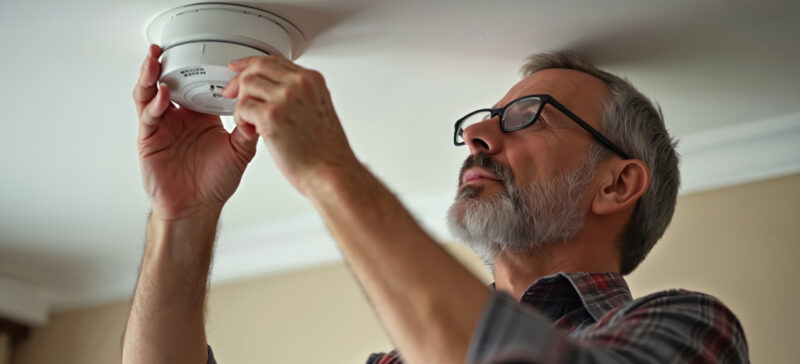Does your home environment work for you? How well does your home set-up allow you to function and perform your daily activities, such as moving about, bathing, dressing, cooking—and even entering and exiting your home?
These are the ideas behind home accessibility. For anyone who is experiencing changes in vision, physical ability, or cognitive ability, features of the home that worked well in the past can pose new challenges. You can take steps to make your home more accessible.
Accessibility needed
Most older adults want to stay in their homes as they age. Yet only about 10% of U.S. homes are designed to be accessible for older adults, according to the U.S. Census Bureau. More than one of every four older adults, they say, has “trouble using some feature of their home”. The number rises for adults over age 85.
The most common safety issue is getting up and down steps safely, says the Census Bureau. The second most common concern relates to bathing. “More than half of bathroom injuries are directly related to using the shower and getting into or out of the bathtub,” reports the Census Bureau.
“Falls are the leading cause of injury for adults 65 and older,” notes the National Council on Aging (NCO). For older adults, most falls that send older adults to the Emergency Department happened in bedrooms, on stairways, or in bathrooms, says the NCO.
Steps and stairways
On stairs, safety features include: having handrails, safety grips, and clear markings for step edges. Good lighting helps, too. In some cases, a ramp or lift can make navigating stairs safer. In addition, some adults choose to rearrange the home so that they can sleep, eat, and bathe all on one floor. At a home’s entrance, installing a ramp can improve accessibility as well.
Bathroom safety
Bathroom surfaces are often wet and slippery. Non-skid mats and abrasive strips can help. Other ideas are: installing handrails, grab bars, built-in shower seats, and a flexible spray nozzle so it’s not necessary to stand in the shower.

Furniture tipping
Furniture, televisions, or appliances tipping over are another common cause of injury at home among older adults, says the NCO. Dressers and armoires have been involved in numerous accidents. Wondering how to prevent tip-overs? Anchoring these big pieces can prevent injury. The government website, Anchor It!, explains how to do it to keep people of all ages safe.
Wheelchair accessibility

If you are using a wheelchair, a number of modifications may be needed to help you move about freely. The UDS Foundation publishes a detailed list to improve accessibility. Examples include: a wheelchair-friendly entrance ramp with a maximum rise of 1” per foot; a 36” pathway on each side of the bed and at the foot of the bed; closet rods and shelving that are within 48” of the floor; roll-in showers; a toilet seat that is 17-19” from the floor; having sinks at chair height; and cabinet shelves no higher than 48”.
Carbon monoxide
A gas we can’t see or smell, carbon monoxide can build up from malfunctioning heating systems or appliances. It can also result from burning charcoal briquettes indoors, says the CDC—a surprisingly common cause. “Older adults over 65 years of age are especially vulnerable to unintentional carbon monoxide poisoning,” explains the CDC. Carbon monoxide poising sends 15,000 people to Emergency Departments every year, they add, and it can be fatal.

The solution is economical, says the CDC: Install carbon monoxide detectors “on every floor of your home and within hearing range of each sleeping area.”
Living with dementia
If you or a household member is living at home with dementia, some additional safety steps can help an individual retain freedom and independence, says the National Institute on Aging. Consider features of the home that may cause confusion or accidents. For example, they recommend:
- Remove curtains and rugs with busy patterns that may confuse the person.
- Insert safety plugs into unused electrical outlets and consider adding safety latches to cabinet doors.
- Remove or lock up cleaning and household products, such as paint thinners, bleach, and matches.
For more resources on dementia, be sure to visit the Dementia Resources on the CoAction website, prepared by the CoAction Dementia Outreach Specialist.
Your Area Agency on Aging can help
As explained in Can You Age Well at Home?, your Area Agency on Aging is here to help you enjoy your independence at home. Mobility is a key concern of many older adults, says Jen Trowbridge, President & CEO of CoAction. As Northwest Indiana’s Area Agency on Aging, CoAction is a go-to “resource hub of all the things older adults need to thrive,” she explains.
Everyone’s needs are unique, and it’s important to plan ahead. By taking a coordinated approach, a CoAction care manager can help you plan the wrap-around supports you need and connect you with helpful services and programs. To contact CoAction, you can complete a Services Request form online.
Everyone deserves the freedom to age well. As you age, your home should continue to feel comfortable, convenient, and safe. CoAction is here to help.

